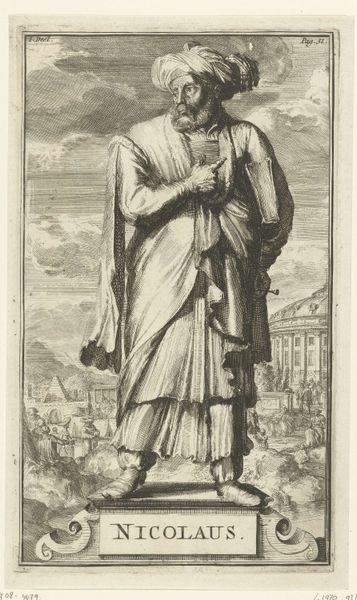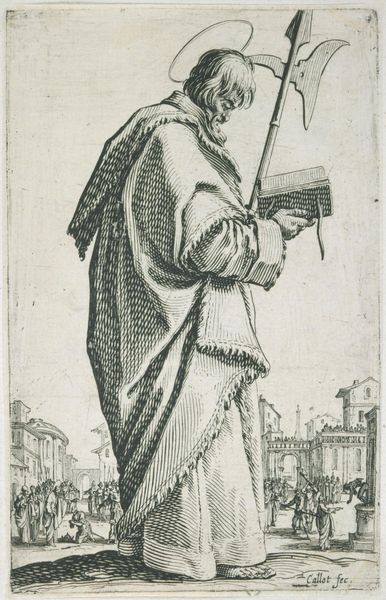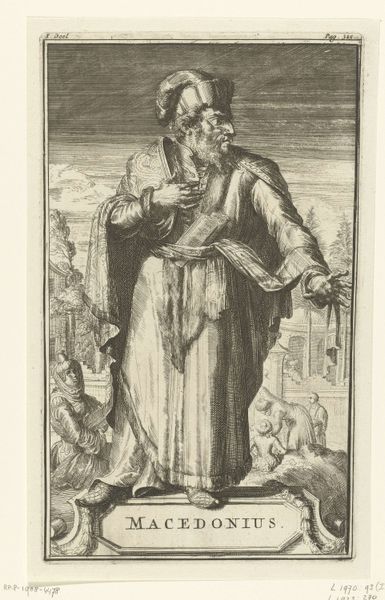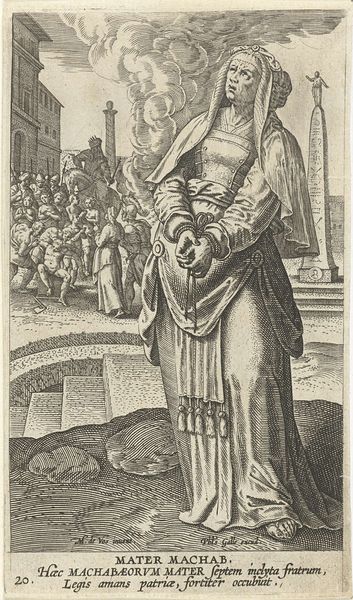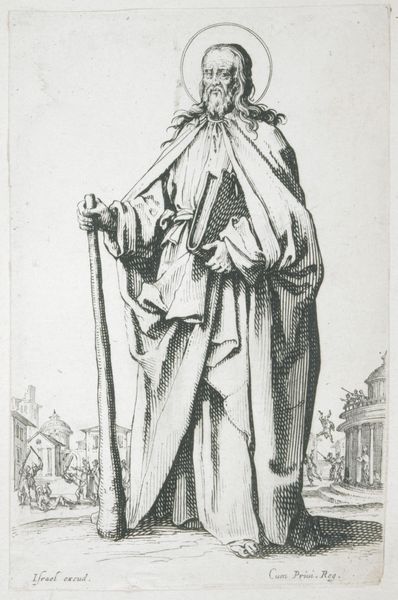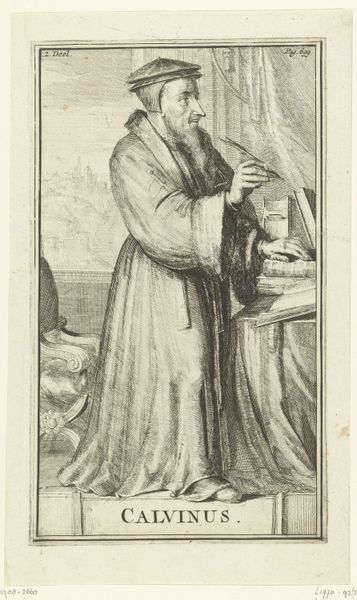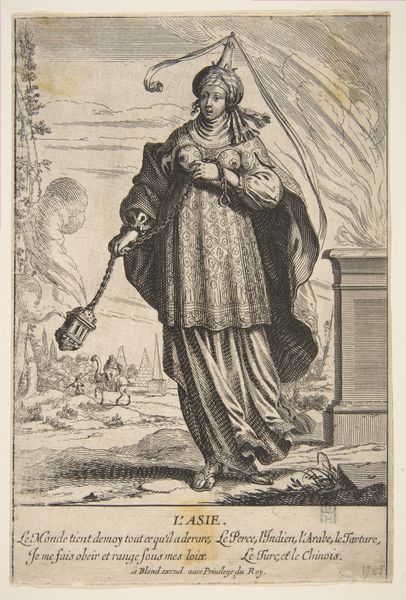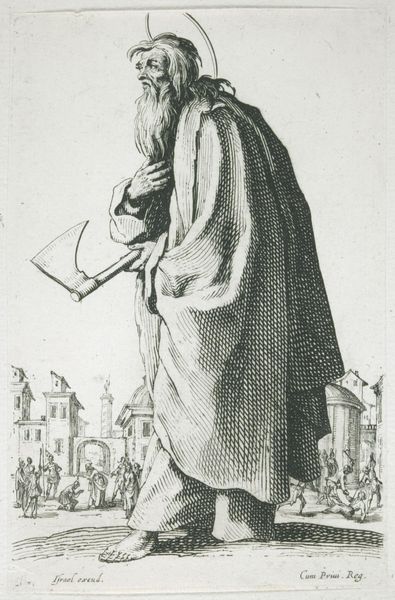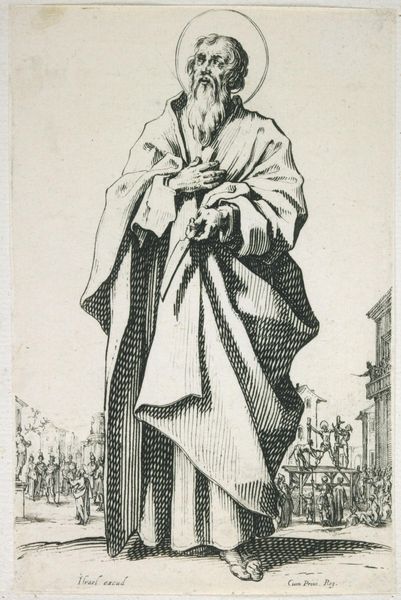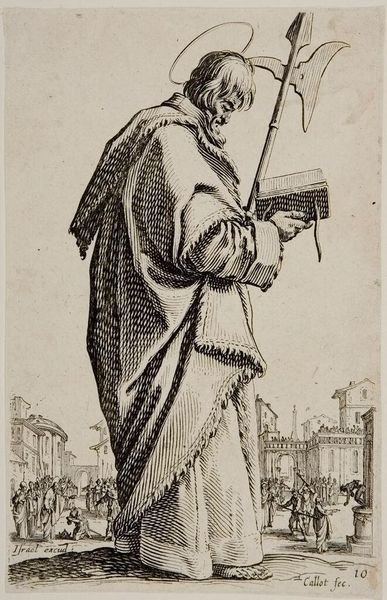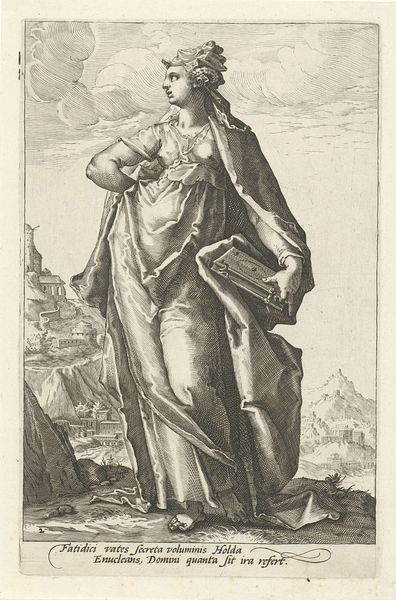
print, engraving
#
portrait
#
facial expression drawing
#
baroque
# print
#
pen illustration
#
caricature
#
old engraving style
#
caricature
#
figuration
#
form
#
pen-ink sketch
#
line
#
portrait drawing
#
history-painting
#
engraving
Dimensions: height 270 mm, width 160 mm
Copyright: Rijks Museum: Open Domain
This is Romeyn de Hooghe's "Portret van Eutyches," an engraving made in the Netherlands around the turn of the 18th century. De Hooghe was a prolific and politically engaged printmaker, and this image reflects the religious and intellectual debates of his time. Eutyches, the 5th-century theologian, is depicted as a statue, elevated above a crowd and a classical city. He's holding a book, perhaps representing his controversial doctrines that challenged the orthodox understanding of Christ's nature. De Hooghe, working in the Dutch Republic, a center of both religious tolerance and intellectual ferment, uses the image of Eutyches to comment on dogmatism and the dangers of rigid adherence to theological doctrines. The print is a visual argument, employing classical imagery and architectural backgrounds to lend gravity to its critique. To fully understand this work, we might explore the history of religious controversies in the 17th and 18th century, studying pamphlets and theological treatises to shed light on the intellectual landscape that shaped De Hooghe's art. Ultimately, this print reminds us that art is always embedded in a specific social and institutional context, and its meanings are best understood through careful historical investigation.
Comments
No comments
Be the first to comment and join the conversation on the ultimate creative platform.
